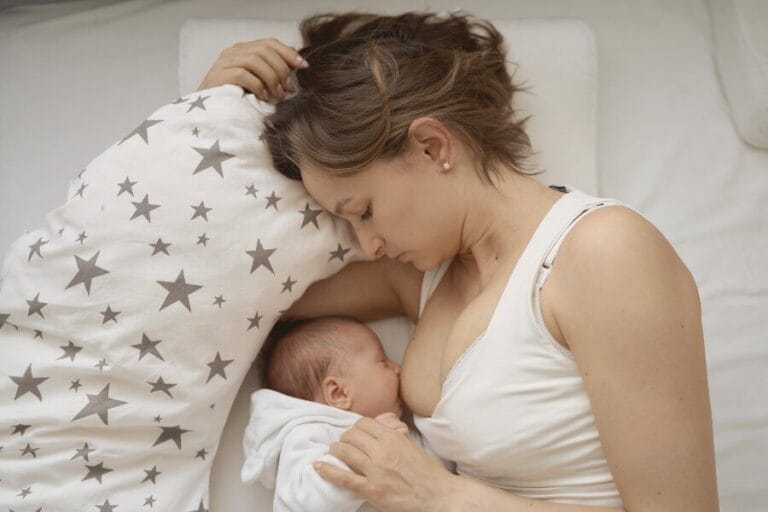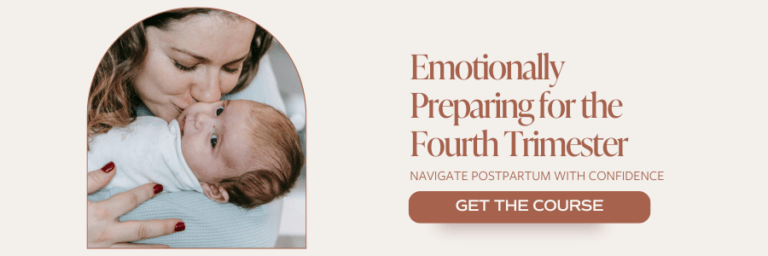7 Breastfeeding Essentials & What Should Wait for Baby to Arrive
The basic breastfeeding essentials
Before baby arrives, the idea of breastfeeding may feel overwhelming or confusing. There is a ton of conflicting advice out there about what you’ll need to get through. Will you have too much milk, not enough, or get clogged ducts and mastitis. Or maybe it’ll be a dream and you won’t have any issues at all. If you’re planning to breastfeed we highly suggest reading our ultimate guide to prepare for breastfeeding.
This information overload makes it tricky to know what you will need for certain. It’s easy to get bombarded by TikTok and Insta influencers and end up overspending on items you’ll never use. So we’ve put together a list of the absolute bare minimum breastfeeding basics. We’ve also included some information on items that are often called essentials, but plenty of breastfeeding moms don’t end up needing.
Water
Breastfeeding is dehydrating. Breast milk is made of 87-88% water and the process takes a lot from your body. You’ll be drinking a lot of extra water, and may want to buy an additional water bottle. A big one. Staying hydrated – along with eating a nutrient-rich, healthy diet – helps ensure your newborn gets what they need.
Nursing pillow
You will be sitting, holding your baby, multiple times a day for long periods of time. A nursing pillow can help make breastfeeding easier and more comfortable. They support your little one during their meals. This helps alleviate, and potentially avoid, strain on your back and shoulders. Supportive pillows can also be pivotal in maintaining a proper position for your baby to feed comfortably. There are many options with varying prices, ranging from around $30 on Amazon to $150 from specialty retailers. We suggest you talk with a lactation consultant to review options and suggestions on what would be best for your shape.

Breast pump
We believe a breast pump is essential for the large majority of new mothers that choose, and are able, to breastfeed. The two main types of pumps are hand pumps and electric and you’ll likely need one of these depending on your lifestyle. If you are going to be working or will be continually away from your baby for extended periods of time, an electric pump is a necessity. Otherwise, you can start with a manual pump. This allows you to tag in your partner to supplement with bottles. Pumps can also assist with new mamas that struggle with low milk supply, or producing too much. Very few new breastfeeding moms find their purchased breast pumps a waste of money. If you’re unsure, talk to your provider or a lactation consultant and pick out an option in each category and wait to buy them until baby comes.
Nursing Friendly clothing
We’ve left this open-ended as some mamas swear by nursing bras while others prefer tank tops or robes. Nursing clothing provides accessibility, comfort, and discretion. Luckily, there are plenty of options and styles of shirts and clothing that don’t look like they are built for nursing at all. Think through your lifestyle when picking something out, and avoid trendy clothes that you wouldn’t normally go for. Look for options with functional buttons or loose tops so you can easily slip a boob out. Avoid form fitting tops or dresses that restrict access to your breasts. Consider packing one nursing friendly in your hospital bag for the day you head home.
Vitamins
You’re very likely going to need some sort of supplements, but we can’t recommend a specific one for you. Talk to your healthcare provider to find out what’s right for you. That said, according to the CDC, while producing breast milk your body needs extra: Iodine, Iron, Vitamin B12, and Vitamin D. All of these can be obtained in the required amounts with a healthy, balanced diet.
Nipple cream
Your body may not love breastfeeding when you first start. One sore, cracked nipple can force the entire burden of nursing on the other. Two of them, depending on the severity, could mean temporarily supplementing with formula. Nipple creams can help relieve pain, support healing, and moisturize. There are many options, from pure lanolin to hydrogel and they can be great at treating soreness. However, pain is often the result of improper latching or positioning. We have a full breakdown of potential breastfeeding problems here should you need it.
Breast therapy packs
Breastfeeding supplies beyond the basics

Bottles
You may not need bottles at all. If you plan to supplement with bottle feeding, go ahead and purchase a set of four or six. One thing to note is that bottles should be thoroughly sanitized after every use. Having extra or spare bottles can save you that hassle at a time when you need to store extra milk. That said, some new mamas find they waste money on buying multiple bottles that they end up never using. We, personally, ended up needing four for the majority of time.
Reusable nursing pads
Haakaa
Footstool
Nipple shields
Silverettes
These are small metal covers for your nipples throughout the day or night. They keep a moist environment for optimal healing as well as protect your sore nipples from rubbing on your clothes or being bumped into. Some mamas love them, some hate them. This study found that its participants who used nursing cups, rather than traditional care like lanolin nipple cream or pads, had a quicker recovery time for nipple fissures and lesions while also relieving painful symptoms faster. Keep them in mind when you need relief for sore nipples.

Entertainment
One-handed snacks
You’re still eating for two, mama! The CDC suggests breastfeeding mamas will need 340-400 more calories each day. Keep healthy, nutrient-dense snacks nearby, preferably food that can be eaten with one hand and doesn’t create a mess. We love Chomps!
Talk to the experts
As we’ve mentioned many times already, you should probably be talking to a personal lactation consultant. They offer in person education and advice that can be invaluable to new mothers. Our best suggestion is to call your hospital ahead of time and ask what they will provide and what you should bring yourself. You’re not alone, mama. With the right guidance and support you can be confident and capable of handling anything! That’s why we created The Matrescence, to establish a space that gives new moms all the information we wish we had when we were experiencing the exact same things. This is a space made by experts and filled with the advice from plenty of other professionals in the field. Our best selling course, Emotionally Preparing for Postpartum, will prepare you to rock the fourth trimester with confidence!







